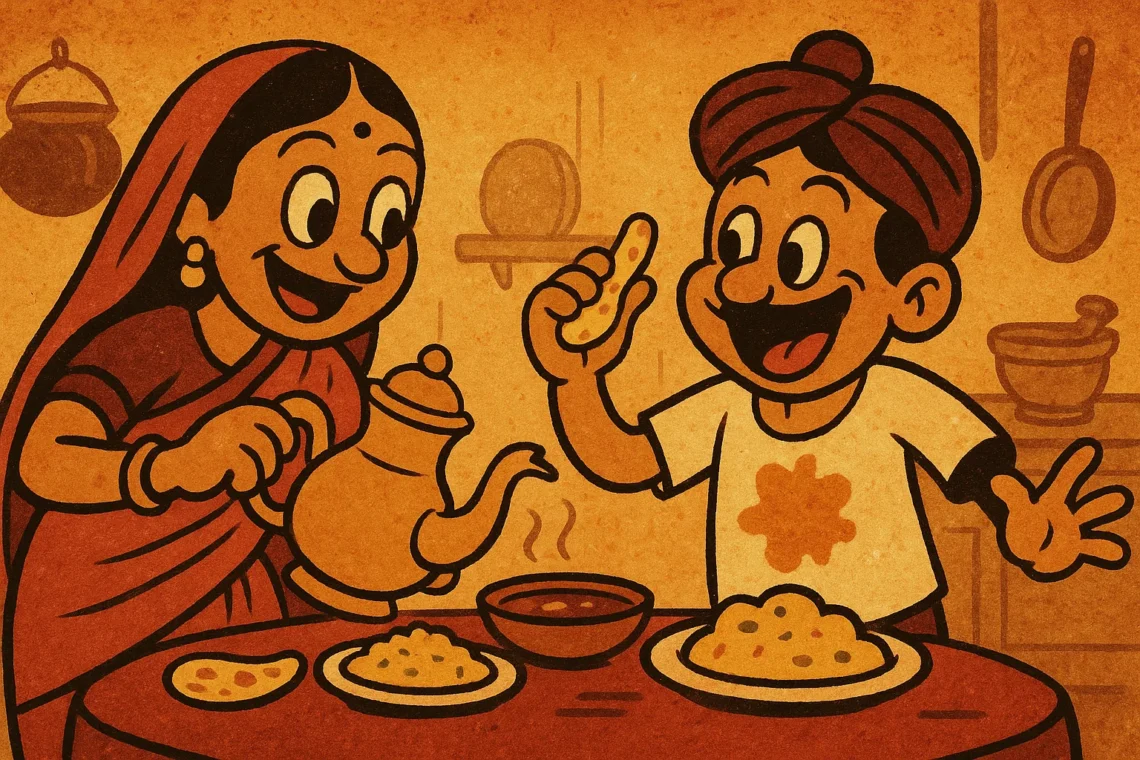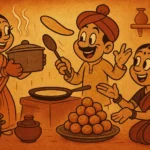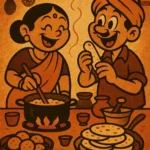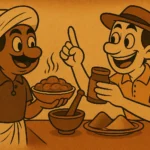There’s something strangely personal about the masala stains on my favorite white T-shirt. As I sit here, looking at the faint yellow smudge near the collar, I can’t help but reflect on the countless times that shirt has been the unwitting victim of my culinary escapades. How many times have I dropped a spoonful of dal tadka on it? Or maybe it was a rogue drop of curry from a freshly made chicken masala, still too hot to handle. Either way, that stain has seen me through some of my happiest and most chaotic kitchen moments. It’s more than just a spot on fabric; it’s a mark of identity, a reminder of my love for Indian food and the life I’ve built around it.
But let’s talk about this masala stain. It’s not just any stain; it’s the mark of betrayal. You see, turmeric, the golden spice that gives curry its rich, vibrant color, is both a hero and a villain. It’s the spice that elevates every dish, making even the simplest lentils something worth savoring. And yet, it has a vendetta against my clothes. No matter how careful I am, no matter how many napkins I use to dab away the potential danger, turmeric always finds a way to leave its mark. It’s as though the stain is its way of saying, “I’m here, and I’m part of you now.”
The Complex Relationship with Turmeric
Turmeric is not just a spice. It’s a cornerstone of Indian cooking. In every household, in every kitchen, turmeric is present, quietly working its magic. It gives dishes depth, color, and a flavor that is both earthy and bright. And yet, there’s always a little bit of chaos when it’s involved. Whether it’s the yellow fingers that come from handling fresh turmeric or the stubborn stains that refuse to come out of your favorite shirt, turmeric demands respect. It’s a spice that is both revered and feared. You can’t love Indian food without accepting the risk of being stained, in more ways than one.
I’ve often wondered why turmeric stains are so persistent. They’re not like other stains—ketchup or red wine—where a little soap and water can fix things. No, turmeric stains are like badges of honor. You can scrub, you can bleach, but they stay. And in a way, they become part of the story. It’s as if every time I wear that shirt with the turmeric stain, I’m wearing a memory of every meal I’ve cooked, every family dinner, every time I’ve embraced my culture through food. The stain is my food legacy—imperfect, but real.
The Unspoken Bond Between Me and That Stain
And let’s be real. I could have prevented the stain. I could have used an apron, or maybe been more mindful with my ladle. But there’s something about cooking Indian food, something deeply embedded in the process, that makes me forget about anything else. The rhythm of chopping onions, the sizzling of spices in hot oil, the way the kitchen fills with the aroma of cumin and coriander—it’s easy to get lost in the moment. The stain is a reminder of that. Every time I see it, I’m reminded of how much I love the food I grew up with, the food that makes me feel at home, no matter where I am. The masala stain is like a love letter written in turmeric.
Maybe this sounds dramatic, but hear me out. When you move from Mumbai to Austin, as I did, the process of cooking becomes not just a daily task, but an emotional anchor. The masala stain on my T-shirt is not just a sign of food gone awry; it’s a symbol of my connection to the food I grew up with. Every stain tells a story. Maybe it’s the time I made dal fry on a particularly homesick evening, or the time I was rushing to finish cooking for a dinner party and knocked over a bowl of curry. Each time, the stain becomes part of the fabric of my life, a reminder of where I’ve been and how far I’ve come. It’s my badge of honor for being a cook, a student of the kitchen, and a lover of food.
Dealing with the Guilt of the Stain
But, let’s not pretend. As much as I love the sentimental value of this stain, there’s also a little bit of guilt attached to it. You know, the guilt of knowing that I could have saved my shirt from being permanently marked by turmeric. There are days when I look at it and think, “Maybe I should throw it out and buy a new one.” But then, I realize that doing so would be like erasing a part of my culinary history. The stain has become part of my identity now, like a permanent tattoo that can never be washed away. In a strange way, it’s a sign that I’ve embraced the chaos of cooking, the messiness of life, and the joy of sharing food with others.
So, I’ve come to accept the stain. It’s not a flaw; it’s a feature. Just like the food I cook, which is sometimes messy, imperfect, and filled with surprises, the stain is part of the whole experience. It’s a physical manifestation of my love for Indian food—the comfort of dal, the joy of biryani, the spice of curry—and the small sacrifices I make for it. The stain isn’t something I should feel ashamed of. It’s a part of me, a reminder that the best things in life are often messy, imperfect, and beautifully unexpected.
The Masala Stain That Tells a Story
So, dear masala stain, we’ve been through a lot. You’ve seen me at my best and worst—grateful for a home-cooked meal, and frustrated by a missed recipe. You’ve been with me on days when I’ve felt homesick and days when I’ve felt proud of my kitchen triumphs. You are a small, yellow mark, but you represent so much more: love, tradition, and the sometimes chaotic beauty of cooking. You’ll never come out, but that’s okay. Because, in a way, you’ll always be there to remind me of who I am, where I come from, and the delicious mess I’ve made along the way.
Born in Mumbai, now stir-frying feelings in Texas. Writes about food, memory, and the messy magic in between — mostly to stay hungry, sometimes just to stay sane.












